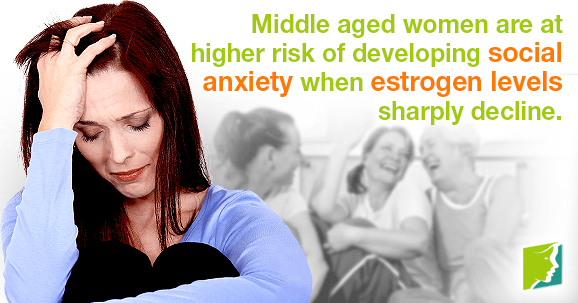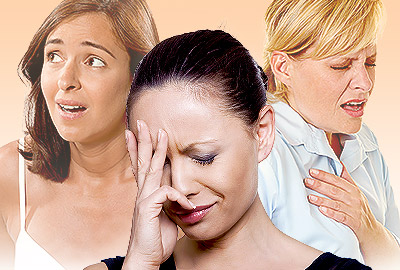Anxiety is defined as a psychological state that is characterized by the amplified and persistent feelings of worry, tension, and nervousness. Anxiety disorders affect more than 40 million Americans on average, and are two times more common in women than in men. Specifically, middle-aged women are the highest risk of developing anxiety because of hormone fluctuations they experience during menopause. There are several types of anxiety disorders, which include generalized anxiety disorder, panic disorder, and social anxiety disorder. Keep reading to know more about social anxiety disorder in middle aged women.
What Is Social Anxiety Disorder?
Social phobia, also known as social anxiety disorder, is characterized by intense, anxious and self-conscious feelings in everyday social situations. People with social phobia have a strong fear of being watched and judged by others. They get embarrassed easily and have trouble facing social situations like public speaking, eating and drinking in front of others, and even talking to people, especially strangers. Social anxiety disorders tend to develop during the teen years and can worsen over time.
Symptoms of social anxiety disorder can include
- Blushing
- Excessive sweating
- Shaking
- Difficulty speaking
- Shortness of breath
- Nausea
Symptoms usually worsen once they start because they feel like everyone is watching them. Social anxiety is manifested as extreme shyness and discomfort in social settings.
Causes of social anxiety disorder can range from anything like stress and genetics to previous emotional trauma. However, the leading cause of anxiety in middle aged women is hormone fluctuations experienced during menopause because women are twice more likely to develop anxiety than men.
Hormonal cause
This is because estrogen levels fluctuate, drop, and stay consistently low during the menopause transition. Since estrogen influences how the brain regulates mood, middle aged women are at higher risk of developing mental health disorders when estrogen levels sharply decline.
Option Treatments
Exercising regularly is the key to reducing stress and releasing “feel-good” neurotransmitters, like serotonin, in the brain. Ideally, one should get 30 minutes of aerobic activity daily, five times a week. Walking, cycling, and swimming are all good forms of low-impact workouts that can help ease anxiety. Making simple dietary changes can also be beneficial to reducing anxiety. Including protein, fiber, fatty acids, and fruits and vegetables into meals is ideal for optimum performance and boosting energy. In addition to these treatments, it is recommended to see a healthcare professional about therapy or prescription medication.
Social anxiety disorder is characterized by intense anxious and self-conscious feelings in everyday social situations, like talking to people and eating in public. Anxiety disorders affect around 40 million Americans on average, and middle-aged women are at the highest risk of developing an anxiety disorder because of hormone fluctuations experienced during menopause.
Sources
- National Institute of Mental Health. (n.d.). Anxiety Disorders. Retrieved September 19, 2014, from http://www.nimh.nih.gov/health/publications/anxiety-disorders/index.shtml
- Office on Women's Health. (2012). Anxiety disorders fact sheet. Retrieved September 19, 2014. from http://www.womenshealth.gov/publications/our-publications/fact-sheet/anxiety-disorders.html




